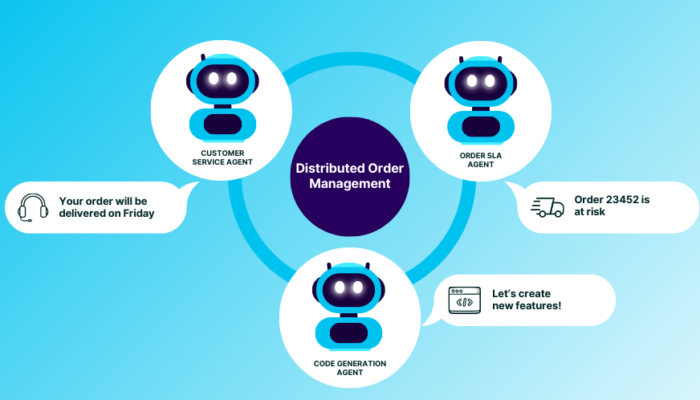As a CMO, you already had your hands in lots of areas of the business before the past year. So what was one more, right? Enter 2023. The year you started to explore how to make your digital advertising more inventory aware. Why?
The Symptom (told as a story)
Imagine you’re scrolling your favorite social site. You see an ad for a product that looks perfect. Great! With much anticipation you click…… only to see the three dreaded words:
Out of Stock
But it could have been worse. How? Imagine you’re searching for the perfect <insert your own highly desirable item here>. You find it. Aha! Eagerly you click, select your preferred color, and add it to your cart. You checkout. “Gotcha!” you think to yourself, feeling satisfied and excited.. Then…..
Just a few hours later, you feel your phone vibrate. Suspiciously you retrieve your phone from your pocket. It’s a message. Your order has been canceled. “WTF?” You’re pissed. And rightly so. Frustrated, you look for a phone number on the email. Nothing. So you visit their website, and several pages later you find it. A support number.
You: “What happened to my order?”
Customer Service: “We’re sorry, but that item is no longer available.”
You: “But your website said it was in stock”
Customer Service: “Unfortunately, sometimes that happens when our inventory doesn’t get updated”
You hang up.
“Grrrrh! Won’t order from them again” you think to yourself.
The Cost (told as cold hard facts)
When customers click on a search or social ad that leads to an out of stock product it costs the retailer in two ways:
- Wasted ad spend that impacts Return on Advertising Spend (ROAS)
- Negative brand experience for the customer
When customers click on a search or social ad and place an order and the order is canceled it can cost the retailer in multiple ways:
- Wasted ad spend that impacts Return on Advertising Spend (ROAS)
- Cost of processing the order through the commerce platform
- Increased contact center costs if the customer calls your service department
- Negative brand experience for the customer
The Underlying Problem (blame the accountants)
Where do you start? First, your commerce platform probably gets its inventory data from an accounting system (aka your Enterprise Resource Planning system or ERP). A big “old school” system that’s great for financial reconciliation, but agile? No. If you were going to design a cool, hip, responsive website that delivered personalized shopping experiences, would you have an accountant do it? Ummm…. of course not. And it turns out the same goes for inventory experiences. What’s an inventory experience? Good question.
An inventory experience is a micro fragment of the shopping experience. But a very important one. It’s that little piece of data that tells you if something is in stock or not. If it’s available in your size and the color you want, and available at your local store. Get it wrong and it leads to disappointed customers and wasted ad spend. Unfortunately getting that little piece of data accurately and in real-time can be really, really hard. Let’s take a look.
First there’s the accounting system (ERP) problem. ERPs are designed as financial systems of record. Think slow and steady wins the race. Which is great if you get audited, but they just can’t move at the speed of digital commerce. They’re just too…. well… batchy. What does that mean?
They like to consume transaction updates from Point of Sale (POS) systems one batch at a time. And they only like to send inventory updates one batch at a time too. What’s more, while they’re very smart from a finance perspective, when it comes to inventory they’re pretty…. well… not smart. As in, most of them can only send big dumb batches of all inventory positions. They can’t just send the most important ones, or the ones that have changed, or whatever. It’s like asking for a weather forecast for your own city and only being able to get a dump of every city in the country. Not very efficient or helpful. Even worse, if too many people ask at the same time, it can’t keep up. But digital commerce doesn’t happen in batches. And digital shoppers don’t line up one at a time.
Instead, it happens here, now, everywhere, all at once. Which means you need something that can keep inventory data in sync across all your warehouses, stores, and systems, in real-time. Something that can be queried by thousands or millions of people at once without getting bogged down. That operates with the speed and flexibility required by modern digital commerce.
The Solution (with the wrong name)
Enter the Distributed Order Management System (OMS).
“Wait? What! I thought this was supposed to be about inventory.”
“Don’t worry. It is.”
Despite the name, one of an order management system’s main jobs is actually to figure out what inventory you have available so you can show customers an accurate view of what’s ‘in stock’ across all your digital channels. It consumes inventory feeds from other systems. And serves them up as fast as digital shoppers can browse. Across all your digital channels.
And for those retailers and brands with really heavy inventory needs…. like BIG inventory… there are some cool new tools in the works for processing massive inventory data sets at scale. Really fast. Like… at the speed of digital commerce. Which sounds cool except….
You’re a marketer. What can you do about inventory? Who do you even ask?
The Summary
2023 was the year marketers got smart. They stopped waiting for other teams to fix inventory issues, and took matters into their own hands. They learned who to contact, and the right questions to ask. Because at the end of the day, the inventory experience is just as important as the rest of the customer’s journey. And as all innovative marketers know, you need to provide a great customer experience to build brand loyalty.
If your marketing team is fed up with spending money on ads that lead to product pages for out of stock items⸺or even worse, orders that got canceled after being placed due to an out of stock⸺it’s time to get educated. Learn how to ask the right questions of all your internal teams, and build a business case to fix your inventory. Because your return on advertising spend may well be the financial driver your company needs to get it right. Do it for you, and for your customers. Contact Fluent Commerce today.



